DAC Online Exhibition 2020: Digital Power: Activism, Advocacy and the Influence of Women Online
Chair(s):
- Kathy Rae Huffman
-
- Independent Media Art Curator
Art Show Overview:
Introduction
DIGITAL POWER: ACTIVISM, ADVOCACY AND THE INFLUENCE OF WOMEN ONLINE
The Digital Power exhibition is the eleventh online exhibition organized by the ACM SIGGRAPH Digital Arts Community. When I became the Chair of the Digital Arts Community in 2016, my experience of the arts at SIGGRAPH was focused on events associated with the annual conference. I had chaired the Art Gallery and Art Papers for various annual conferences, and had served on numerous juries and on-site committees. These experiences were valuable and important, and gave me the opportunity to mix and mingle with a diverse community of artists and technologists through intensive, immersive experiences that continued to feed my imagination after the shows had closed and we had all returned to our everyday lives.
These annual SIGGRAPH conference events were durational experiences, with a lifecycle that meant that we would come together for intense bursts of activity, and then move on to the next thing. Being involved with the year-round ACM SIGGRAPH committee dedicated to Digital Arts has been different. It represents an ongoing commitment to the cause over the long haul. I honor and appreciate the Digital Arts Community Committee for the ways in which they continue foster community, make space for generations of digital arts practitioners within their ranks, and work throughout the year to ensure those of us working at the intersection of arts, computer graphics, and interactive techniques stay informed and connected. The DAC Committee members are an accomplished, dedicated, and diverse group of artists, scholars, technologists, and activists. We are a continuous presence, knitting together the year to year activities taking place at the conferences, and providing a longer view on where the field is going, a perspective reflected in our ambitious and continually growing SIGGRAPH Art Show Archives project, and in our online exhibitions.
Our online exhibitions, which well precede my tenure as Chair, epitomize the values of the Digital Arts Community. During the last decade they have provided a space for our community to explore emerging themes in the digital arts world, to share up-and-coming work, and also to create a retrospective appreciation of where we have come from. With the 2020 exhibition Digital Power, we have taken another new step, and one not without controversy. It is about women in particular, and women online. This show is less about the affordances of digital media and emerging technologies pe se, and more about how women working online can shape and transform the world. It is a return to origins in the sense that online access itself can be hugely transformative and empowering for action. It is the zeal of the pioneers coupled with the awareness of decades of evolution and transformation. That is not say that the works in the exhibition lack technological novelty or virtuously. We see both in the wide range of projects represented. However, the motive force behind the exhibition is about women, power, and influence in the many forms they can be understood, appreciated, and shared online.
At a moment when we are all struggling to reinvent our home, work, and school lives online due to the COVID-19 crisis, and where social justice demands are bringing us to the streets nonetheless – potentially to our peril – the online environment, our virtual community, is an essential meeting place for activism, advocacy, and influence of all kinds. The focus on women’s power in this exhibition, especially within the context of a computer graphics world that remains disproportionately led by men, highlights some major strands in the conversation. It is an important perspective to highlight and reflect upon as we head into the second half of 2020, where our everyday life will continue to be highly and necessarily computer-mediated, where our lives, our bodies, and our experiences will be shaped from without and within by technologies of care, of surveillance, of communication, representation, and control. What comes after the crises of the moment will depend, in part, upon the brave work women are doing online.
Victoria Szabo
Chair, ACM SIGGRAPH Digital Arts CommunityCurator’s Statement
DIGITAL POWER: ACTIVISM, ADVOCACY AND THE INFLUENCE OF WOMEN ONLINE
An exhibition organized by Kathy Rae Huffman for the ACM SIGGRAPH Digital Arts Community, 2020
A selection of works by women that addresses the practice of advocacy and activism through the intersection of art and technology is the topic of the ACM SIGGRAPH Digital Arts Community’s 2020 online exhibition Digital Power. Activism (the efforts, actions and attempts to bring about political and/or social change) and advocacy (the active support of a cause or an idea) test our expectations about the way women respond to how our earth is treated, how society functions, and how individual choice is challenged. This exhibition is drawn from a vast network of women artists around the world, and although it is a just small sample of the diversity and scope of female-focused use of technology for digital art practice, it celebrates the influence that the works will create, and exemplifies a wide range of issues that concern women and those who identify as women.
Digital Power was intentionally created as an online exhibition; yet, it is important to recognize that many of the works included are viable as art offline as well as online. The flexibility of digital formats is demonstrated not only through artistic exploration, but also as an acknowledgement of the power of the internet itself as a valuable distribution network for media art. Technically, the works utilize methods of production and presentation found across the internet, and the exhibition is therefore a snapshot of the many ways women work online today to take control of their personal narratives, impact society at large, and influence history. They bridge digital technology with feminist concerns, and include explorations of live interactive and online performance; digital video, documentary (including found images and archives), personal narrative and gallery exhibition; mobile apps; AR/VR; and Social networking, messaging, Instagram, e-Zines and blogs.
In development for two years, the ACM SIGGRAPH Digital Arts Community Committee selected Digital Power for support in 2018, following in the footsteps of ten previous, successful DAC online exhibitions. Experts in the presentation of online exhibitions since 2011, the DACC has successfully supported online exhibitions that explore relevant topics and technologies that impact the wider digital arts community. The work of women who delve into significant issues was considered an important topic for our community to highlight, and after constructive discussion about how to frame the subject for the digital arts community, it was announced at the 2019 SIGGRAPH conference in Los Angeles. The ‘Call for Submissions’ was translated into several languages, and was circulated at international media events, posted on mailing lists, and listed in both media art and feminist blogs. Works were accepted for review up until December 16, 2019, then they were juried according to strict ACM SIGGRAPH guidelines. Each work was reviewed by three women: artists and professionals who are active in the digital art community, and who reflect the scope of women’s activity and influence online. <link to jury page>The resulting selection for Digital Power presents 42 artworks by individual women and teams. Artists from around the world are represented, from diverse communities and gender identifications. They are intergenerational, with emerging and young artists as well as celebrated senior artists included. Half of the works originated from countries outside the US, including Israel, Portugal, Germany, Denmark, Spain, Slovenia, Netherlands, New Zealand, Canada, Australia, UK, France, Korea, and Taiwan. Many artists live and work outside their country of birth, travel and exhibit their work internationally, and their perspectives are open and thoughtful, informed by the multiple cultures they experience. Although largely trending towards a Western point of view, the works examine substantial issues important in today’s conflicted world and reflect a wide range of concerns, some obviously related specifically to women, others less so. Topics explored include art+science, climate change, the urban environment, LGBTQ+ issues and female identity, historical research, feminist narratives, Chicana and Latinx viewpoints, violence and incarceration, women and their work, surveillance and facial recognition technology, collaboration, the female community, sexuality, diversity, borders and refugee concerns.
Digital Power looks at how artists’ works can interface with the digital and the activist community and how they advocate to influence others with research and personal stories that are well documented or personally narrated. These online projects enrich our browsing experience and give personal and practical meaning to the growing corporate control of the resource we know as “the net.” As a curator, I am encouraged by the diversity and scope of the works, and although it was not possible to include every project submitted, each demonstrated integrity and purpose, and was submitted with careful consideration to the topic. There are of course contradictions, and sometimes questions that cannot be answered embedded in the content of the works. As we view and take the artists’ messages into our consciousness, it becomes clear that artists’ intrepid investigations of the human and natural condition are essential. They expand our understanding of the wide world beyond our individual experience. I personally want to thank each artist for their dedication, and I encourage all to continue to explore the moral responsibility we each must make the world, and the internet, a better place. I am convinced that the works in Digital Powerare key to knowing why we do what we do, as artists, as curators, and as consumers of art. They give credibility to artists who work for change, for tolerance, and for understanding.
Artist Activism and Media
Human rights and anti-war activists, and especially artists, were energized and politically effective at changing national (and international) opinions in the 1960s. Observing sit-ins, demonstrations, and marches, unofficial media voices became even more visible and important and influenced the public discourse by the efforts of independent journalists and artists. During the 1980s, the AIDS crisis presented artists with an essential role, and numerous art works have been recognized as important contributions to this historic era. Video art works and documentaries captured citizen-fueled support for AIDS research and were filmed during the marches held to advocate AIDS research and information. Two artist-led initiatives, Act Up https://actupny.org/, and Paper Tiger TV https://en.wikipedia.org/wiki/Paper_Tiger_Television utilized activist practices, changed hearts and minds, and amassed a valuable archive of video works still used today for educational and artistic programming. The efforts of alternative media in the 1980s was documented in video and PR campaigns: AIDS activism changed the public’s attitude and knowledge about the virus. In solidarity with the widespread activist influenced artistic activity, two game-changing books were published in 1988, Susan Sontag’s “AIDS and its Metaphor,” and “AIDS, Cultural Analysis/Cultural Activism,” by Douglas Crimp. The influence of activist media as artistic practice became an even stronger force, and when it united in purpose with LGBTQ, Black and Latino community initiatives, their united messages ultimately changed history.
During the 1990s, digital communication and the World Wide Web became common. Although the internet and WWW was evolving throughout the academic community, it was slower to evolve as an activist platform. I was based in Austria in the 1990s and was in contact with artists and activists, especially the Eastern European artists. The activities at that time were influential to a wider understanding of how technology and art can advocate for new ideas, especially how Eastern Europe connected and opened to the world. One project that invited the participation of Eastern European artists was the Van Gogh TV project “Piazza Virtuale” <www.medienkunstnetz.de/werke/piazza-virtuale> for Documenta IX in 1992. This was an international experimental live television broadcast that pushed the boundaries of both existing telephone service and emerging prototypes for digital visual communication. The satellite TV transmission was an evolving, constant collaboration between artists and programmers, East and West, performing, working, and living together. “Piazza Virtuale” was able to incorporate the telephone keypad, digital fax, picturephone, and BBS contributions from all over Europe in its twice daily satellite broadcast. And it became a platform for artists to express their new political freedoms. By 1995, the Internet had become a reality for the artistic community. One influential project was promoted by Muriel Magenta, professor at Arizona State University, with a “call for women’s voices” for “The World’s Women On-line!” a videowall organized during the Fourth World Conference of Women, in Beijing, China in September 1995. http://wwol.inre.asu.edu. As it evolved, this early women’s database became a powerful example of the large female community that was already present in the online environment, one that was mainly invisible in both the male-dominated art and media art world at the time.
Women Online Today
Today, many online resources are available for women, and online portals and communities that focus on specific topics are plentiful. With topics as diverse as motherhood, online gaming, and feminist theory, tech-minded women artists can search beyond their physical communities for guidance and solidarity. Activist portals for the environment, support for immigration rights, explorations of science and art, and issues of gender and identity are abundant. There are also many valuable portals for feminist research that offer access to first-person interviews, and most are available for free. A very small sample includes: the !WAR website, <womenartrevolution.com> in which Lynn Hershman-Leeson provides hours of original footage and interviews with dozens of feminist artists and thinkers from her production of the film !Women Art Revolution; the archives of The Woman’s Building at The Getty Research Institute, and the interviews that were made for the landmark exhibition Doin’ it in Public in 2011 for the Otis Art Institute, as part of Pacific Standard Time <https://www.otis.edu/old-ben-maltz-gallery/womans-building>; the Vienna based ArtFem.TV, <http://artfem.tv/> an online project that maintains an international selection of feminist works by women that was founded in 2009 as a passion project, and is led by Evelin Stermitz; and The Feminist Art Project (TFAP) at Rutgers University, an essential link to events and projects by women <https://cwah.rutgers.edu/the-feminist-art-project/>. FACES: Gender, Technology and Art celebrated 20 years of online activity with an exhibition and mini conference in 2017. It remains an extremely active community, and a viable resource yielding numerous female associations around the world, both with in-person and online meetings. < https://www.faces-l.net/> A major contribution to the numerous women in media art and in an attempt to promote and celebrate them, is the database created by Ars Electronica, ‘Women in Media.’ Although difficult to find the path to the archive, there is a blog that presents female artists. <https://ars.electronica.art/aeblog/en/2020/04/10/women-in-media-arts-ai/>
In 2011, Occupy Wall Street was an opportunity for media artists to utilize Augmented Reality as an alternative to corporate power. And as was pointed out in the Feb 11, 2020 issue of Frieze, one of the UK’s most influential art journals, activist artists have been instrumental in waking up the public to issues as varied as climate change and ageing. Over the past decade, artists have demonstrated, occupied, and created work that informs the public. They have demanded that museums divest themselves of support from the very high level donors who contribute to the world’s climate crisis and the opioid crisis, and have staged major activist performance events at mainstream venues like The Tate Modern <https://hyperallergic.com/214959/liberate-tate-annotates-tate-moderns-turbine-hall-in-25-hour-guerrilla-protest/>, The Whitney Museum of American Art <https://www.pulse.ng/the-new-york-times/entertainment/artists-pull-work-from-whitney-biennial-in-protest-of-its-board/9kx5qd4> and The Guggenheim Museum <https://news.artnet.com/art-world/nan-goldin-guggenheim-sackler-protest-1461643>. This type of public action has attracted widespread media, as it is happening at arts and educational institutions.
Yes, artists and activism have a historical relationship, and it is a long one. Artists often lead the way by adopting new media and internet technology early, by hacking systems and sites developed for other purposes, by occupying virtual territory with Augmented Reality and otherwise utilizing sometimes unconventional technologies in innovative ways. These measures have succeeded, and their messages have influenced public and private opinions. Although activist performance may at times be disruptive, the nature of art is transformative, and activism is alive and well in all areas of visual arts disciplines, as well as design, performance, theatre, literature, and music. In these contemporary times, the world needs fearless artists. My hope is that women artists’ initiatives today will be as effective, if not more effective than ever, in the fight to resolve conflict and misinformation, especially about the pandemic that has emerged in this decade, a crisis that has forever changed how the internet functions as a communication and social resource
With respect,
Kathy Rae Huffman
CuratorDEDICATION
As a curator who has mainly worked with experimental artists, I have by necessity relied on the accumulation of my personal experiences, and the many rewarding conversations with the artists whom I have worked with over the past years. Many female artists influenced and educated me, especially about the power of art, feminism, and digital media. They have shown me that, in addition to the role art plays as an introspective activity, its influence on culture, politics and communities is critical to change and female empowerment. Their works and opinions are insights into their deep alternative experiences, perspectives, and life challenges. I would like to dedicate this online exhibition to the women who have influenced me. They include (but are not limited to) the late activists and artists Nathalie Magnon, Lyn Blumenthal, Barbara Hammer, and Nan Hoover. Their experimental practice is a legacy that also influenced a receptive, eager generation of artists and curators. I am also deeply in awe and appreciative of the diverse and consistently reflective FACES community, and have ultimate respect for my co-founder partners, Diana McCarty, Valie Djordjevic, and Ushi Reiter. The connection to this community over two decades has been an essential resource for and pathway to the concerns of women artists.
Website:
http://digital-power.siggraph.org/
Acknowledgements:
Acknowledgments are in order, for the all-volunteer Digital Arts Community Committee who support the exploration of the online environment. Special thanks to Derick Ostrenko and Hye Yeon Nam for website implementation; appreciation to Myriam Thyes for her design contribution; and appreciation of Melentie Pandilovski & Nancy Buchanan, for their support.
Exhibition Artworks:
-

@Conscious_Dialectic
[Ariana Cano]
Categories: [Internet Art] -
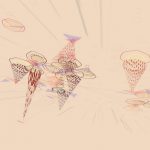
A Selfless Society
[Julie Freeman]
Categories: [Performance] -
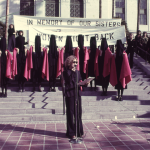
Ariadne: A Social Art Network
[Leslie Labowitz Starus] [Suzanne Lacy]
Categories: [Performance] -
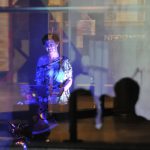
Art + Games World Tour
[Isabelle Arvers]
Categories: [Augmented Reality/Virtual Reality] -
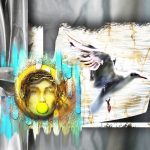
Between the Layers
[Tammy Mike Laufer]
Categories: [Performance] -
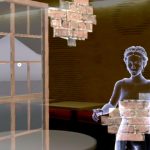
Bitter Wind
[Elizabeth Hunter]
Categories: [Animation & Video] [Interactive & Monitor-Based] -
![CPA [Consistent Partial Attention]](https://digitalartarchive.siggraph.org/wp-content/uploads/2020/07/DAC2020_Olafson_Excerpts_of_CPA_Consistent_Partial_Attention_1-scaled-1-150x150.jpg)
CPA [Consistent Partial Attention]
[Freya Björg Olafson]
Categories: [Animation & Video] [Internet Art] [Performance] -

Crystal Mine
[Sarah Rasines]
Categories: [Sound Art] -

Data Regina
[Olivia Louvel]
Categories: [Performance] [Sound Art] -

deep dive: the angel of nothing that sav...
[Jayelle Lopez]
Categories: [2D & Wall-Hung] -

Dis…Miss
[Anne Bray]
Categories: [Animation & Video] [Installation] -
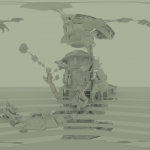
Falling
[Sandrine Deumier]
Categories: [Animation & Video] -
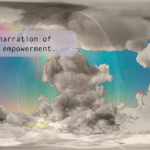
Feminism is a Browser
[Charlotte Eifler]
Categories: [Internet Art] -
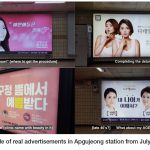
Gangnam Makeover
[Agatha Sunyoung Park]
Categories: [Augmented Reality/Virtual Reality] -
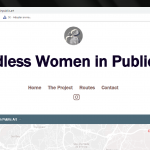
Headless Women and Other Events: Tours f...
[Mariana Morais]
Categories: [Internet Art] -
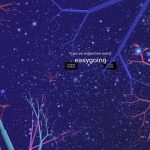
I am a ____ Neuron
[Yoon Chung Han] [Soo Jung Kwack]
Categories: [Interactive & Monitor-Based] -
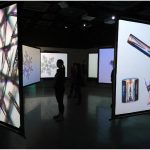
Ice-Time
[Angelika von Chamier] [Clea T. Waite]
Categories: [Installation] -
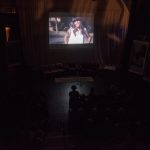
Incorrigibles
[Alison Cornyn] [Kathleen Husler]
Categories: [Animation & Video] -
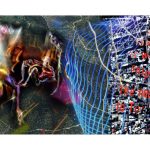
Involuntary Journeys. Refugee stories, l...
[Mechthild Schmidt Feist]
Categories: [2D & Wall-Hung] -

Jiang Jian: Mother of Wounded Warriors a...
[Jing Zhou]
Categories: [Internet Art] -
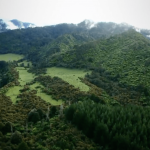
Māori Ways of Speaking
[Vaughan Rapatahana] [Joanne Marras Tate]
Categories: [Animation & Video] -

Mother_Protect_Me
[Joselyn McDonald]
Categories: [Animation & Video] -

Moxn
[Poliana Baumgarten]
Categories: [Animation & Video] [Performance] -
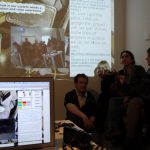
Networked Conversations as Activism
[Helen Varley Jamieson]
Categories: [Internet Art] [Performance] -
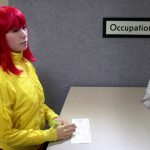
Occupation
[Elena Knox]
Categories: [Animation & Video] -
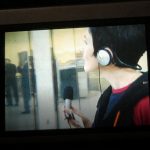
Open Sorcery Poetry (OSP)
[Diane Ludin] [Francesca da Rimini]
Categories: [Performance] -
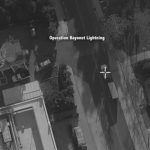
Operation Empathy
[Nancy Buchanan]
Categories: [Animation & Video] -

Pattern : Code
[Ahree Lee]
Categories: [Electronic/Robotic Object] -
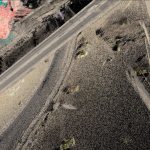
Predictive Cities
[Manu Luksch]
Categories: [Animation & Video] -
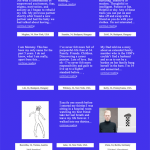
PROJECT 30SOMETHINGS
[Anna Kasnyik] [Courtney McMahon]
Categories: [Internet Art] -

Public Secrets
[Sharon Daniel]
Categories: [Animation & Video] -
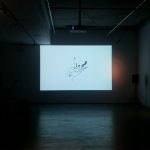
Recurrent Queer Imaginaries
[Helen Pritchard] [Winnie Soon]
Categories: [Animation & Video] [Installation] -
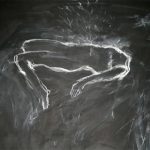
Regarde le Ciel
[Elizabeth Leister]
Categories: [Performance] -

Relations: LESBIAN MOVEMENT/25 YEARS OF ...
[Marina Gržinić] [Zvonka Simčič]
Categories: [Animation & Video] -

Save Face
[Eleanor Gates Stuart]
Categories: [Animation & Video] [Performance] -
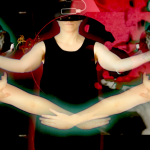
Signaletic Flow 2.0
[Simon Howden] [Rewa Wright]
Categories: [Performance] -
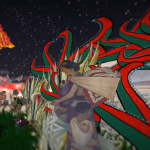
The Coyolxauhqui Imperative
[Liliana Conlisk Gallegos]
Categories: [Animation & Video] -
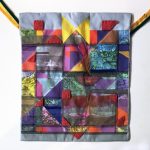
The Three R's Plus Art
[Leslie Nobler]
Categories: [Design] -
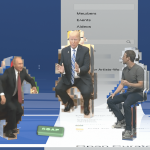
u$aar v3.0
[Sandra Araújo]
Categories: [Animation & Video] -
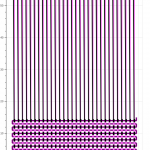
Webmachine
[Juli Laczko]
Categories: [Animation & Video] [Electronic/Robotic Object] -

Wonders Wander
[Shu Lea Cheang]
Categories: [Animation & Video]




